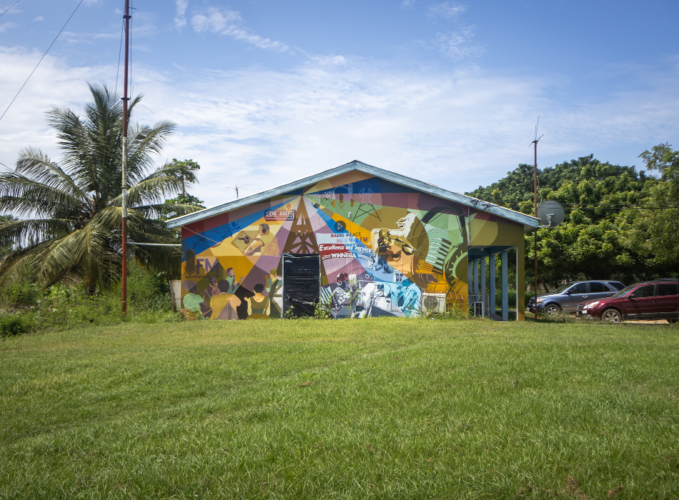Walk just a little bit outside the community of Gamoa Onyadzie in the Central Region of Ghana, and you’re likely to come across government-owned forestation projects — tracts of land where the government is planting trees to establish forests. The community is host to a large-scale partnership with the Forestry Commission of Ghana that, if successful, could redefine how forestation projects are done in the country.
For years, the community had been suffering from the same problems that increasingly plague communities across Ghana: windstorms ripping off rooftops, uneven rainfall patterns and intense heat.
The community’s women were especially hard hit, seeing their crops wilt in the high temperatures and sometimes losing their homes to the storms.
While a reforestation project to protect the village would have provided both ecological and economic benefits to the community, the people of Gamoa Onyadzie lacked the funds to start one themselves.
That’s when the Ghanaian government, which was already looking to increase the country’s tree cover and repair the damage from decades of deforestation, stepped in. Twenty-five years ago, the Ghanaian government started managing much of the land surrounding the community.
Every year, some of that land is given — for free — to the community to farm. In light of the challenges faced by women and young farmers, the Forestry Commission ensures that at least 20 per cent of the land is allocated for women, and another 20 per cent for youth.
Trees provide wind blocks and shade cover for communities and stabilize slopes, which is important in areas that have experienced deforestation.

As the rainy season sets in, farmers are given tree seedlings, mostly for teak trees, to plant next to their fields. While teak is not a native species in Ghana, it makes up a significant portion of the forest plantations supported by the government. The farmers are free to farm the land — practising agroforestry — until the trees are large enough to be harvested. They then return the farmland to the Forestry Commission, which will expand the plantation outwards into the fields. The harvested trees are sold, and the community is given 40 per cent of the revenue.
Though tree harvesting occurs, there is no clear-cutting. With every cut-down tree, another is added in its place, and the tree cover continuously grows over time.
Through this, the government is able to reforest large areas near vulnerable communities without having to pay for the labour to plant and maintain them. At the same time, communities are given free farmland for several years, the benefit of expanding tree cover next to the village and a portion of the revenue.
Gamoa Onyadzie is one of the communities being featured in a documentary produced by Radio Peace 88.9FM and Farm Radio International, which will highlight how communities in Ghana are responding to climate change. The hope is that when other communities hear of how Gamoa Onyadzie has benefitted from this arrangement with the government, they will be encouraged to pursue similar partnerships.
Gamoa Onyadzie is now completely surrounded by teak trees, and community members are full of stories about how much better their air quality is, how effective their farms are and the economic development the project has brought to their village. Quite an impressive feat for a community that didn’t have to pay for anything themselves.
Article from Farm Radio International

